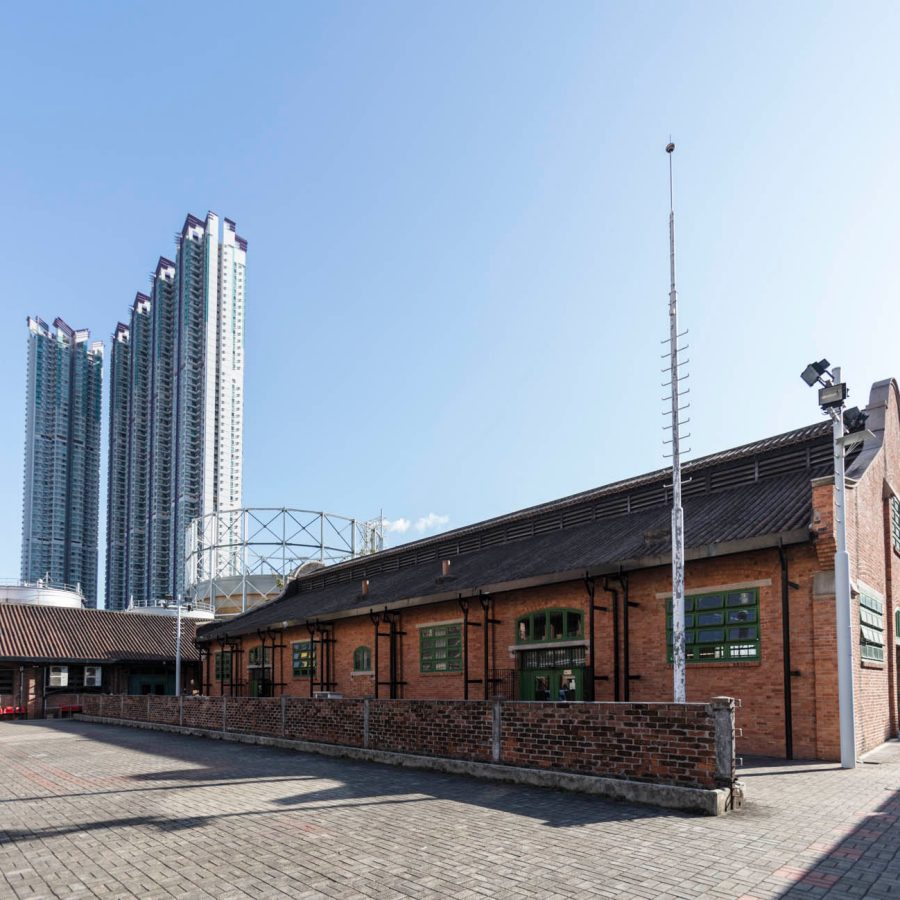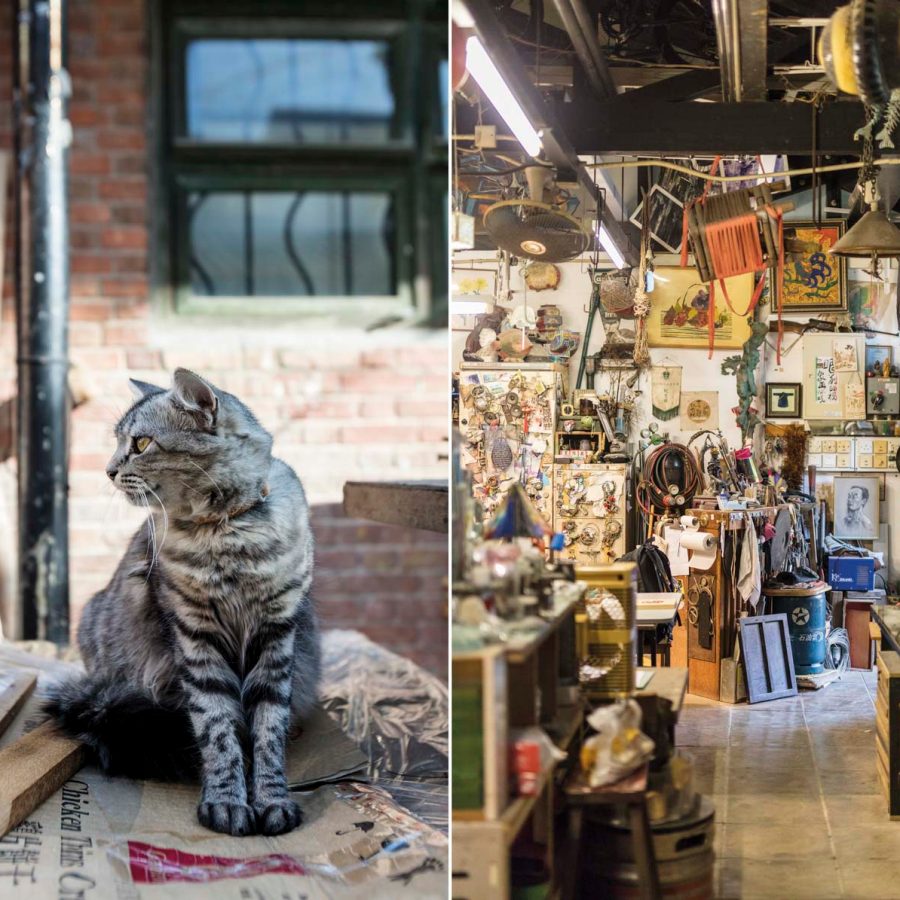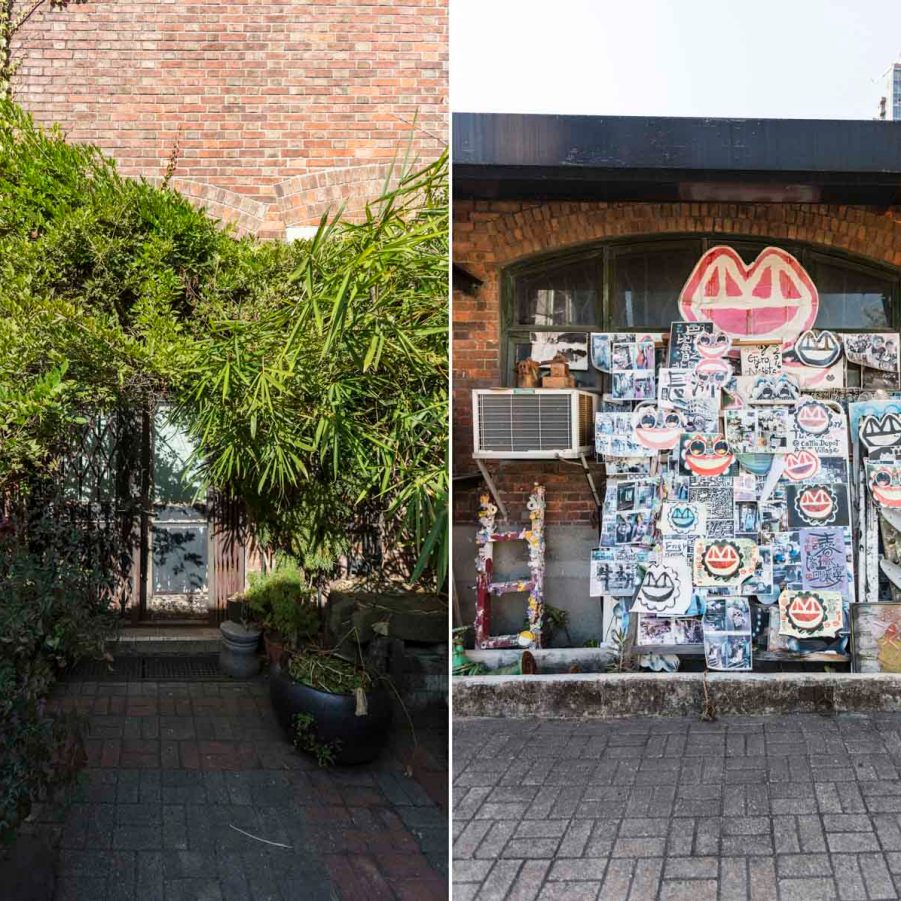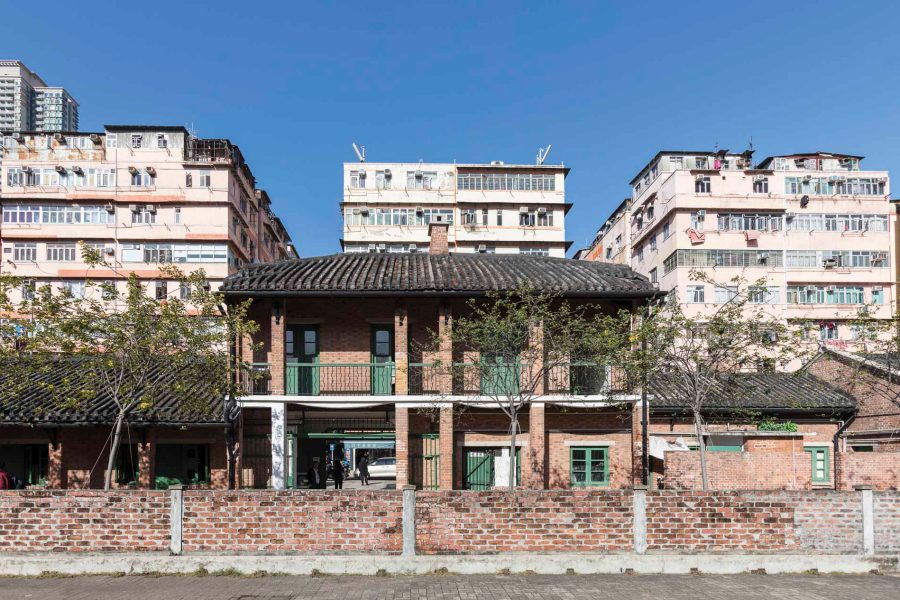Each of the 13 streets in Kowloon’s To Kwa Wan district includes the Chinese character of an animal in its name. There is Lung To (Dragon) Street, Fung Yi (Phoenix) Street and Ying Yeung (Eagle) Street.
Opposite these pink, yellow, orange and blue low-rise buildings (we’re next to the old Kai Tak Airport – flats couldn’t be built higher) is a low-slung, red-brick courtyard dedicated to a rather more humble animal: the cow.
It’s the Cattle Depot Artist Village, which houses 12 art collectives producing work that ranges from the boldly experimental to the plain odd.

Mike Pickles
The compound started life in 1908 as the Ma Tau Kok Animal Quarantine Depot slaughterhouse, which supplied beef to the wider reaches of Kowloon, but was barely tolerated by the Cantonese and South Asians living in the neighbouring colourful walk-ups. (Leo from Videotage in Unit 13 tells me: ‘The feng shui is not good.’)
In 1999, the slaughterhouse was closed and the government began hunting for new tenants. It wasn’t the easiest sell.
Over in North Point, the Oil Street Arts Village was limping to an end. The artists needed somewhere to go: and just a 10-minute, HK$7.5 ferry ride across to Kowloon City was an empty abattoir. By 2001, a handful of them had moved in.

Mike Pickles
Constructing heritage ‘art villages’ has become the organic alternative to the air-conditioned world of the big-time art fairs (like this month’s Art Central and Art Basel Hong Kong). Beijing has 798 Art Zone, London has Trinity Buoy Wharf, while Shenzhen has super-trendy OCT Loft.
The Cattle Depot Artist Village is nowhere near the scale of Central’s consumer-friendly PMQ, or even the Oil Street Arts Village’s successor Oi!, housed in the former Royal Hong Kong Yacht Club. Rather, Cattle Depot’s courtyard is deserted and rather sweet. The only sign that it houses fringe artists is a shabby collection of cartoons, graffiti and photos propped against the wall.
Walk inside one of these Grade II-listed buildings, and it’s a different story.
Start with Videotage, which has been going since 1986. It exhibits both experimental video art and also archives Hong Kong’s new-media work. In January, Videotage launched the One World Exposition, linking young artists from the Chinese Mainland and Hong Kong in an exhibition called #you #me #ourselfies.

Mike Pickles
Next door at Unit 14, 1a Space also focuses on contemporary visual art, spanning video and graffiti, as well as hosting ad-hoc talks and performances.
At Unit 7 is On & On Theatre Workshop, which puts on innovative theatre productions. You can also find On & On across at Unit 12 – an empty rentable space ripe for performances.
Unit 10 is the home of the Frog King (real name Kwok Mang-ho). It’s where his studio is, but the septuagenarian only pops by once a week. He’s obsessed with the flotsam of local life: outside are pot plants, an oversized shell, glass baubles and a lifesize ceramic sci-fi monster.

Mike Pickles
The heritage of the slaughterhouse has not been lost. There are shackles on the floors of the studios, green frames on the windows and the beams are all original. Plus, everything is at ground level – not typical for anything, let alone art, in Hong Kong. It’s easy for anybody wandering around To Kwa Wan to wander in.
There’s a neighbourly feeling shared between the tenants. There were some stray cats that lived here a few years ago – and the units all pitched in to look after them. (Talking of cats: at Wong Chun-wing’s Aladdin’s cave of a studio at Unit 1, there are six in total.)
Cattle Depot won’t ever be PMQ, with a fancy acronym and slick design shops selling framed illustrations of Victoria Harbour. It’s a simple artist village (‘a sincere Hong Kong neighbourhood’, says Leo). And it should be better known.
Cattle Depot Artist Village, 63 Ma Tau Kok Road, To Kwa Wan
Hong Kong travel information
- China – the Chinese Mainland, Hong Kong SAR, Macao SAR and Taiwan Region
- Hong Kong SAR - English
- Chinese Mainland (China) - English
- Taiwan, China - English
- 香港特別行政區 - 繁體中文
- 中国內地 - 简体中文
- 中國台灣 - 繁體中文
- Africa
- South Africa - English
- Asia
- Bangladesh - English
- Korea - English
- Singapore - English
- Cambodia - English
- 한국 - 한국어
- Sri Lanka - English
- India - English
- Malaysia - English
- Thailand - English
- Indonesia - English
- Maldives - English
- ประเทศไทย - ภาษาไทย
- Indonesia - Bahasa Indonesia
- Myanmar - English
- Vietnam - English
- Japan - English
- Nepal - English
- Việt Nam - tiếng Việt
- 日本 - 日本語
- Philippines - English
- Australasia
- Australia - English
- New Zealand - English
